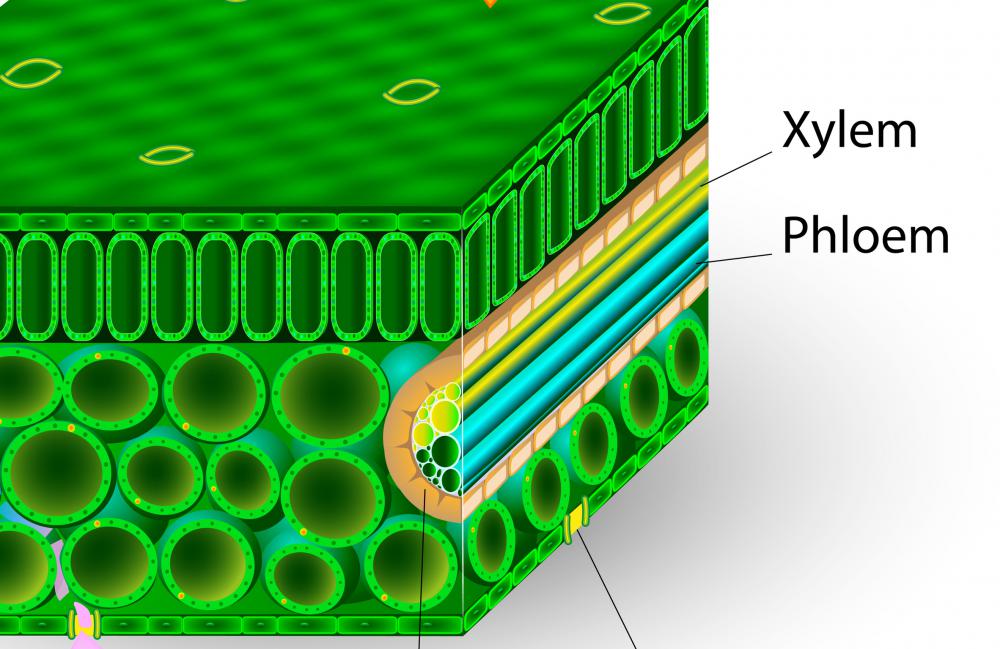At WiseGEEK, we're committed to delivering accurate, trustworthy information. Our expert-authored content is rigorously fact-checked and sourced from credible authorities. Discover how we uphold the highest standards in providing you with reliable knowledge.
What are Basal Tetrapods?
Basal tetrapods refers to the tetrapods (four-legged animals) at the root of the tetrapod evolutionary tree, which contains all terrestrial vertebrates and even some marine animals such as cetaceans: whales and relatives. The basal tetrapods evolved from sarcopterygians (lobe-finned fishes), represented today by the living fossils the coelacanth and lungfish.
380 million years ago, during the Devonian period, the land lacked the lush forests which would characterize all later eras. True trees were just beginning to evolve, but primitive vascular plants would have been everywhere, creating short, shrub-like forests. These were populated by arthropods such as mites, scorpions and myriapods, as well as some simple mollusks which didn't fossilize well. The bizarre fungal monolith Prototaxites, ranging up to 9 m (30 ft) in height, was the tallest thing around. The Earth was warm, causing the continental shelves to be flooded and the lowlands covered in nutrient-rich swamps. The environment was perfect to encourage a small family of fish to evolve stronger underside fins, used to propel themselves through the vegetation of the shallow swamps.

Early lobe-finned fishes like Eusthenopteron, which lived about 380 million years ago, are known to have possessed many features that are known to be unique to tetrapods today: internal nostrils, a two part cranium with an intercranial joint, and most notably, a radius, ulna, and humerus in the fore-fin and a fibula, tibia, and femur in the pelvic fin. The last characteristic is now known to be common to all sarcopterygians.
Around the same time lived Panderichthys, a shallow-water fish with even more basal tetrapod-like characteristics, especially a wide, tetrapod-like head. Panderichthys is a crucial transitional fossil, showing a mid-point in the evolution of the pelvic girdle which made basal tetrapod legs possible. It even had a spiracle, or oxygen-breathing tube, on its head, which later evolved into the stirrup bone in tetrapod ears. This allowed it to breathe adequately in oxygen-poor muddy water.
Living approximately 475 million years ago was the famous Tiktaalik, reconstructions and analysis of which most clearly show an intermediary form between a fish and amphibian. It is unknown whether Tiktaalik was a true tetrapod, venturing on land, although it does seem likely. Studies of the skeleton of Tiktaalik have shown it could have supported its own weight on hand. Its fins had a wrist structure not seen in any earlier fish. Its head had spiracles of substantial size which probably channeled oxygen to primitive lungs. This sarcopterygian even had a wide, crocodile-like head which it could turn to the left and right, independently of its body, an adaptation ideal for hunting on land and unlike any fish before it. Tiktaalik is the best-preserved sarcopterygians to be classified in the subclass Tetrapodomorpha. Tiktaalik, and earlier members of Tetrapodmorpha, like Kenichthys, are considered so similar to basal tetrapods that they have been called "fishapods," in reference to their combination of fish and basal tetrapod characteristics.
One of the first true tetrapods, which still probably didn't predominantly walk on land, but did use its primitive legs to navigate through swamps, was Ichthyostega, which lived 367-362.5 million years ago. Ichthyostega is one of a few basal tetrapods, a tetrapod that is neither an amphibian, synapsid (mammal and relatives), or sauropsid (reptile). These animals had a number of further evolutionary innovations for terrestrial life. For one, Ichthyostega primarily used its lungs to breathe, rather than its gills. It had a special skin covering which helped prevent it from drying out. It had a skeletal structure (especially spine and ribcage) that clearly shows this animal spent major time holding itself up. Ichthyostega and other ichthyostegoids (Acanthostega, Elginerpeton, Ichthyostega, and others) were eventually replaced by temnospondyls and anthracosaurs, including the famous Eryops. Unfortunately, there is a 20-30 million year gap in the fossil record between both groups, only bridged by a few specimens.
AS FEATURED ON:
AS FEATURED ON:











Discuss this Article
Post your comments